Marcela Armas / Arcangelo Constantini
Commissioned by Arte – Ciencia UNAM 2013
The project was originally presented as part of the exhibition SIN ORIGEN, held at the Museo Universitario de Arte Contemporáneo and MUCA Roma in 2012, in Mexico City. SIN ORIGEN was an exhibition curated by María Antonia González Valerio as part of the ARTE + CIENCIA program.
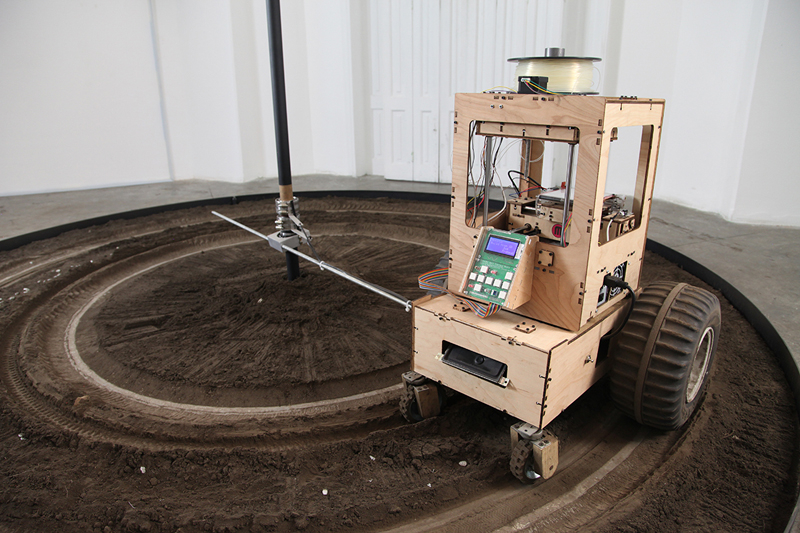
Milpa polímera (tractora polímera)
BIOS Ex MachinA con colaboración del Depto. de Ingeniería Mecatrónica de la Facultad de Ingeniería de la UNAM.
Therefore, the seed’s artificial nature –corn plastic corn- poses a paradox of no easy solution for the conception of the artificial as a copy of the natural. In the seed, both the natural and the artificial are represented, the original and the derivative. The seed evidences the tensions inherent to these distinctions. The seed sown by our piece is not “really” a corn seed, although it has its (material) origin in it.
Corn becomes the mythical origin of several peoples precisely when it ceases to be completely natural, to become also a cultural entity, a device defining eminently human activities such as agriculture. Somewhere between the natural and the artificial, farming maize domesticates both the farmer and the cornfield. But the agriculture represented in Milpa Polímera is also artificial in a second sense: it is mechanized agriculture. The piece itself is a biotechnological mechanism.
At its center, a tractor robot swivels in a closed cycle, sowing the artificial seed. The sterile seeds are printed and fall to the ground on the radial space, turning the soil into a sown field, into a cultural and economic artifact, but a sterile one from which no plant will ever grow, such as its industrial counterpart, a system trapped in a cycle aiming to establish itself as the only possibility. Thus it presents the complex relationship between the natural and the artificial, the origin and the originated, while the soil becomes a representation of what does not remain, furrowed by the biotechnological mechanism and its own sounds.
The seeds printed are made from polylactic acid (PLA), a thermoplastic biopolymer made from corn. While proponents argue that it is biodegradable, actually it is compostable, being degraded under strict methods with precise humidity and temperature control. The truth is there is no evidence that it would disintegrate faster or more efficiently than PET or other plastics in a traditional landfill. It is worth noting that much of the corn used to produce PLA is genetically modified.
The 3D printer included in the tractor uses open-source technology promoted by the collaborative work of a community that seeks to optimize its functions and sharing codes and knowledge. PLA, in contrast, is a patent material with plenty of industrial applications. By coupling both kinds of technology, the tractor blends the contradiction between open and closed, free and limited, and presents it in a transformative act that mimics the production of life through dead and inert materials.
Traditionally in art, nature used to play the role of original model, from which the art piece –epitome of the artificial entity– was the copy. Giorgio Vasari expressed this view of art as follows: “Art owes its origin to Nature herself… this beautiful creation, the world, gave us the model, while the divine intelligence was the original master, which created us as beings superior to other animals, more like God himself –if I dare say”. In Milpa polímera, by contrast, the nature that serves as a model for the work is not the natura naturans, but the domesticated nature and its problematic relationship with technology. The corn of Milpa polímera, such as the corn from all the country’s fields, is not the “original” corn: it is not corn in a state of “pure nature”. On the contrary, it is the current corn from technologized fields: less a domesticated corn than a sterilized one due to biotechnology of genetic modification.
Text: BIOS Ex MachinA
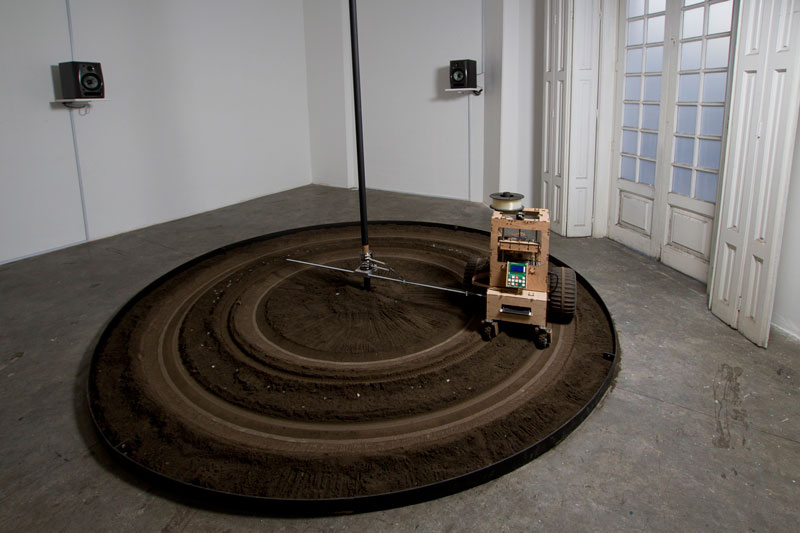
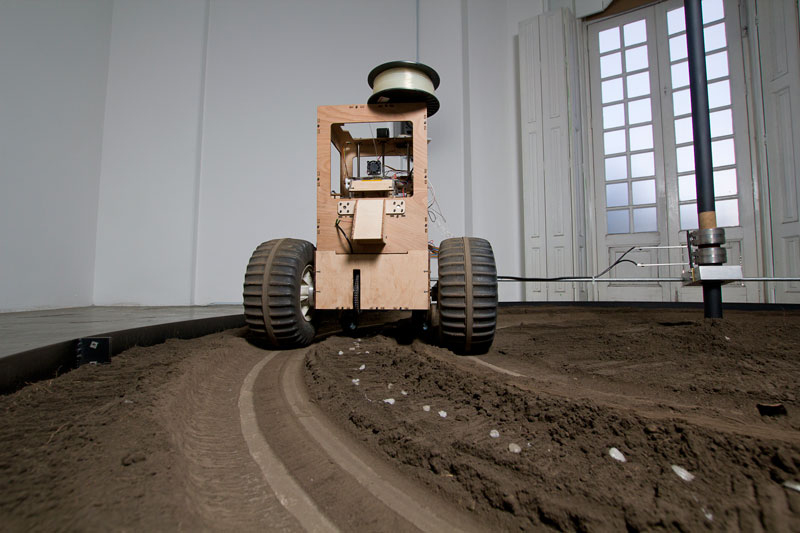
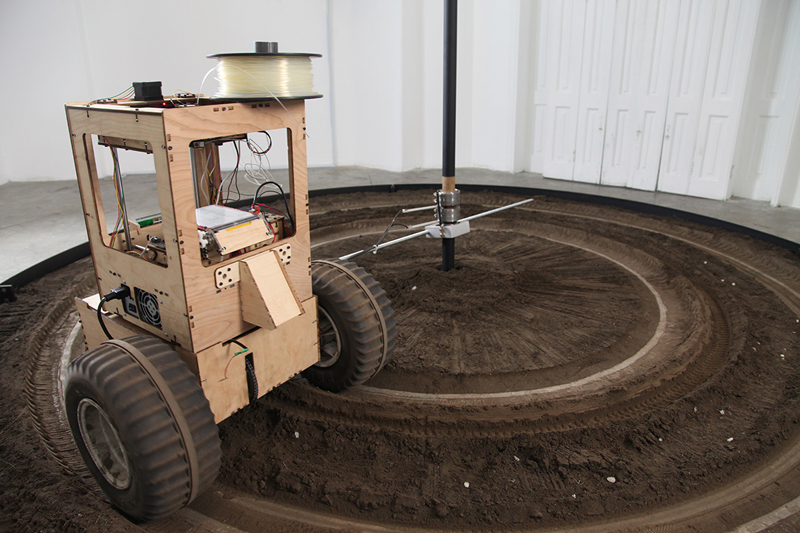
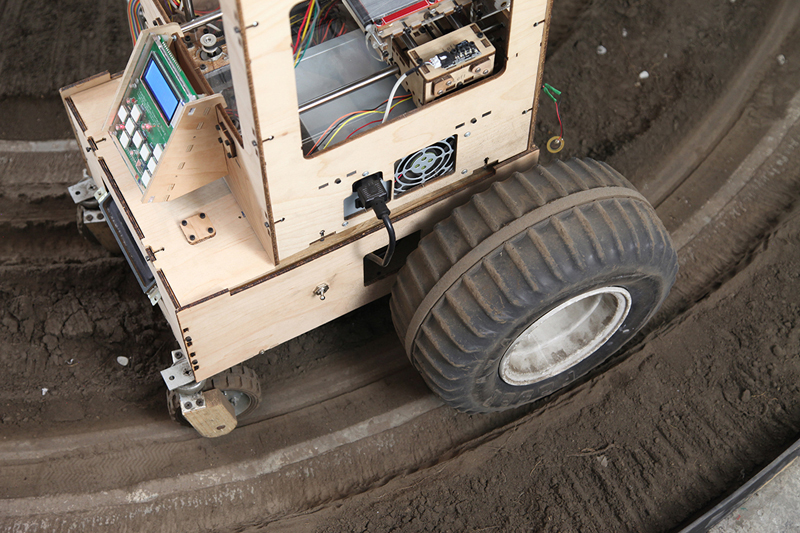
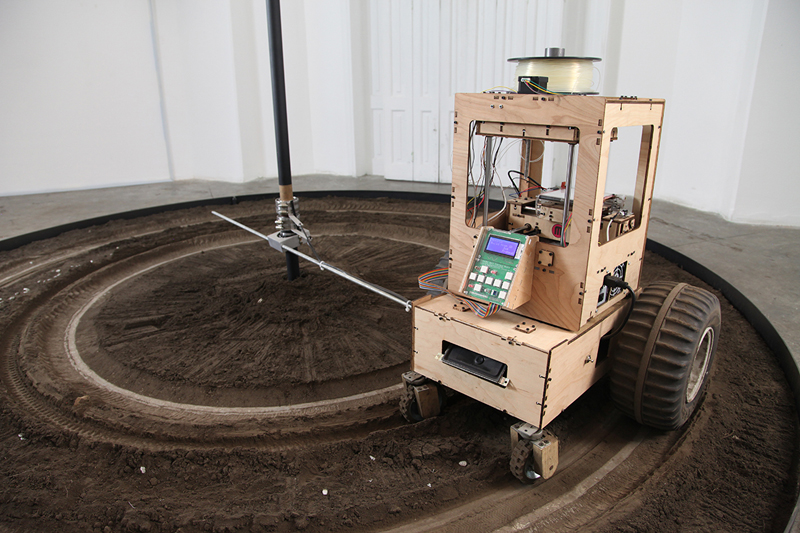
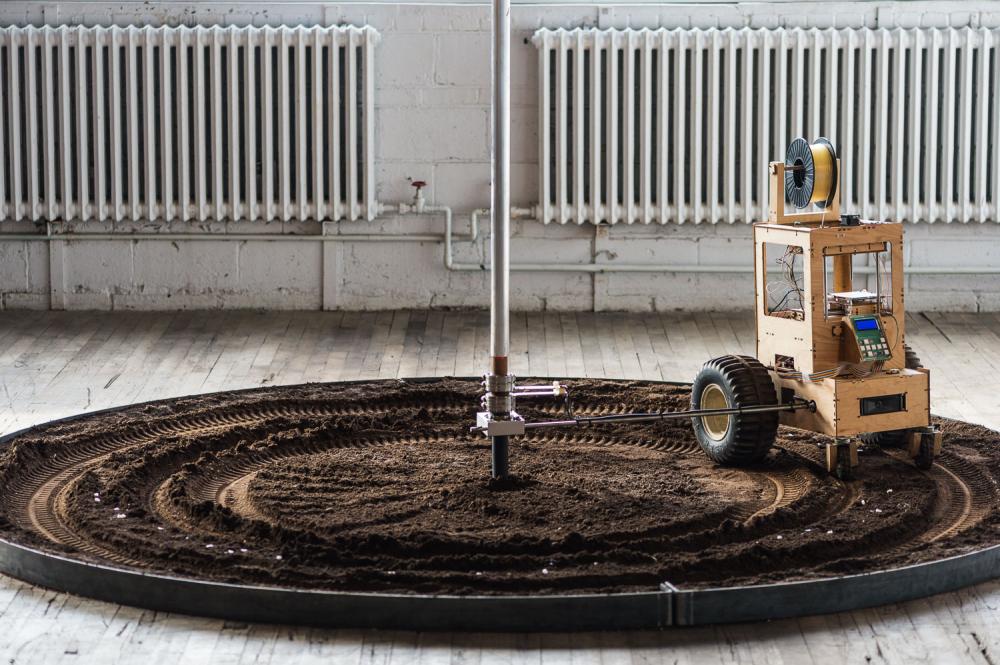


BPLTC III: Food Control
January 14 – February 3, 2016
Eastern Bloc Montreal
The conception of the artificial as a copy of the natural is no longer really possible today.
Maize in particular, while being a link to nature, defines human cultural activity. The production of domestic corn is done in the fields, in an increasingly mechanized way, by the agricultural industry. Milpa Polimera (Arcangelo Constantini & Marcela Armas) thus presents a tractor robot that turns in a closed circle to sow artificial seeds, including a reflection on biotechnology and the transformation of living things in their very heart. The sterile seeds thus sown constitute a cultural and economic object from which no plant will ever grow back. The cycle of life and reproduction is interrupted, and there is no alternative, except to resort, again and again, to the industrial production system. It is a closed system that self-legitimizes in a closed circle … The 3D printer (which prints the seeds) included in the tractor, meanwhile, uses open-source technology promoted by the collaborative work of a community that seeks to optimize its functionalities and share its codes and knowledge.
https://easternbloc.ca/fr/expos-events/expositions/bpltc-iii-controle-alimentaire
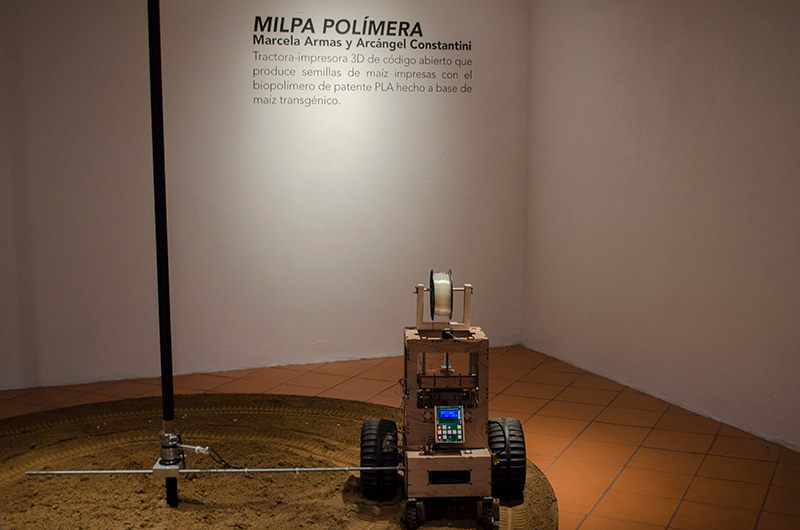
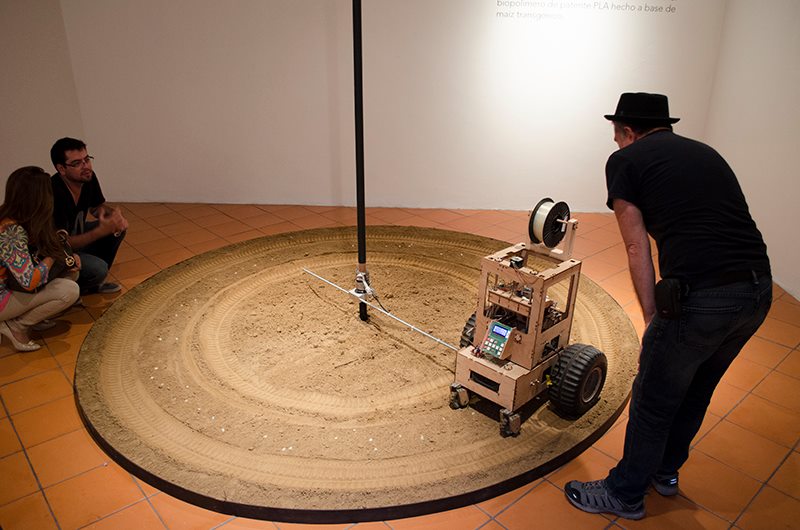
BIOARTEFACTOS: DESGRANAR LENTAMENTE UN MAÍZ. MACO OAXACA, 2014.
Bioartefacts. Slowly Shelling a Corn was presented at the Museum of Contemporary Art of Oaxaca, where the debate centered around the issue of transgenic corn, non-industrialized agricultural production, and Oaxacan traditions.
The event featured participation from the collectives BiosExmachinA, MAMAZ, and Desmodium-máquina, as well as artists Minerva Hernández, Héctor Cruz, Lena Ortega, and Alfadir Luna. The exhibition was curated by María Antonia González Valerio.
“Corn is not what it seems. To pretend that these seeds are in only one way, that they represent a single thing, that they can be bioartificially produced in a factory and that this changes nothing is… pretending.”